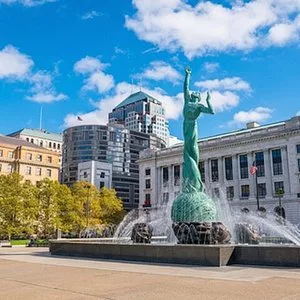Capital contribution fee in NYC real estate? (2018)
Go Back To Previous Page I decided to write a quick blog post on this concept after we encountered a new term emerging from the Construction Industry’s jargon. Several home buyers using NestApple asked us what a capital contribution fee in NYC is. Sometimes, people refer to this as a “capital contribution fee” or an “HOA capital contribution fee.”
I decided to write a quick blog post on this concept after we encountered a new term emerging from the Construction Industry’s jargon. Several home buyers using NestApple asked us what a capital contribution fee in NYC is. Sometimes, people refer to this as a “capital contribution fee” or an “HOA capital contribution fee.”
What precisely does the capital contribution fee in NYC mean?
It remains a one-time charge generally associated with the transfer of title on a property. It remains part of a condo or homeowners’ association, and the buyer or the seller typically pays the fee at settlement to the association.
There’s a good reason why many buildings charge capital contribution fees. They bolster the reserve fund, the community’s savings account and balance sheet. These reserves serve as a cushion for future large-scale maintenance projects, which include repairing and updating:
- Elevators
- Lobbies
- Swimming pools
- Patios
- Lighting
- Signage
Therefore, this contribution usually gets deposited into the capital reserves to fund future maintenance items. This fee varies by building; the buyer or seller can pay for it. However, with NestApple, your real estate cash-back rebate can pay this fee and the closing costs!
Are capital contribution fees legal?
Yes. They’re extremely common, although not every HOA community has them.
However, that doesn’t mean there are no limits. Some rules regulate how HOAs can charge this fee. According to New York law, all payments must be stated beforehand in your community’s governing documents.
Sometimes, your HOA rules want new members to pay these fees, but its governing documents don’t explicitly allow this. The HOA must amend its governing documents to allow this practice in these cases. The HOA would also have to follow the requirements of its governing documents to amend the document.
For instance, the HOA may need the consent of the majority of its board members before amending its governing documents.
What’s the difference between capital contribution fees and other building fees?
Capital contribution fees are explicitly paid upon the transfer of a property, and they’re usually used to fund the repair of common areas. However, they shouldn’t be confused with monthly dues, which residents regularly pay to cover operating expenses and reserve funds.
Additionally, be aware that capital contribution fees differ from special assessment fees, which your condo or co-op board may adjust periodically when reserve funds are insufficient to cover significant repairs and long-term projects, such as siding and roof replacement.
Who pays it — the buyer or the seller?
Typically, the buyer is responsible for paying this fee. The reasoning behind this is that by joining a well-maintained community, they are benefiting from years of maintenance and enhancements, which makes it fair for them to contribute upfront. However, it is important to carefully review your purchase agreement and building documents. If you have any questions or concerns, don’t hesitate to consult your real estate attorney for clarification.
Do capital contribution fees need to be in the bylaws?
Boards cannot simply impose a capital contribution fee without proper authorization. The building’s governing documents—such as the offering plan, bylaws, or proprietary lease—must explicitly allow for the collection of this fee. If the documents do not provide this authorization, the board would need to amend them, which usually requires a formal process and a vote by the owners.
Additionally, boards should clearly disclose this fee during the sale of units to prevent any surprises for buyers.
What happens if a new owner doesn’t pay?
If the fee is authorized correctly in the building’s documents, it is mandatory. Similar to maintenance charges or assessments, it becomes a financial obligation linked to the unit. Failing to collect it can set a poor precedent and undermine the building’s reserve strategy.
Is this just another way to squeeze buyers?
At first glance, especially during an expensive closing in New York City, a capital contribution fee might seem burdensome. However, a well-structured capital contribution fee can actually save all owners money in the long run.
Here’s how:
- It funds long-term projects without requiring constant assessments.
- It allows for proactive maintenance instead of emergency repairs, which are always more costly.
- It maintains a healthy reserve fund, a key factor that lenders consider when evaluating mortgage applications.
While the initial costs may be slightly higher, they can help prevent much larger financial surprises in the future.
What smart boards should do
If your building doesn’t currently collect a capital contribution fee, now might be a good time to consider implementing one, especially if:
Your reserve fund is underfunded
You’ve experienced recent or frequent assessments
You want to responsibly fund future improvements
Here are some key steps to take:
- Review your governing documents
- Consult with your building attorney
- Clearly communicate the purpose and benefits to the owners
- Maintain transparency about how the funds usage
At Daisy, we have helped numerous NYC boards establish capital contribution fees that are fair, legally compliant, and aligned with long-term reserve planning.
How much do you have to pay for capital contribution fees?
Well, that depends on the condo or co-op you want to join. The cost varies widely depending on the size, age, location, and upkeep of your building. The more amenities a building has (e.g., pools, decks, a lavish lobby, and other amenities), the higher the capital contribution fees are usually.
For context, capital contribution fees are typically two to three times the amount of your monthly fees, ranging from $100 to $2,500 (or more) per month in New York. So, you can expect to pay anywhere from $300 to $7,500 (or more) to join a condo or co-op. This fee is not dependent on the sale price.
 In a new development, sponsors list this fee as closing costs for the buyer.
In a new development, sponsors list this fee as closing costs for the buyer.
It typically represents a few months’ worth of the apartment’s standard charges. Some developers sometimes charge potential buyers two separate fees.
- The first one, usually a few months’ worth of common charges, represents the “traditional” way the building builds up its capital reserve fund.
- The second fee is a per-unit charge to help fund and pay for the live-in supervisor’s apartment.
Call your buyer’s agent in New York to get your real estate cash-back rebate.


